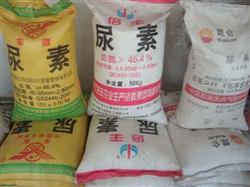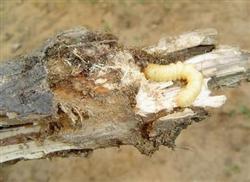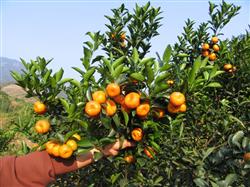Sugar orange planting technology: sugar orange fertilization should pay attention to what?

What should we pay attention to in fertilizing sugar tangerine? Please give guidance during the usual visit to the countryside, found that many farmers in the sugar orange fertilization is not reasonable, the following list for reference: partial application and excessive application of nitrogen fertilizer: urea is more common in production. According to the survey, in recent years, orange orchards with single application of urea for strong fruit fertilizer account for about 40%, and random application often results in excessive dosage. For example, it is not uncommon for plants to apply more than 500 grams of urea. Partial and excessive application of nitrogen fertilizer resulted in thickening and thickening of the pericarp, resulting in the formation of poor-quality coarse fruits; delayed coloring, the emergence of a large number of green fruits; poor flavor and decreased juice rate, especially the taste was sour and unpalatable. Phosphorus and potassium fertilizer can obviously promote the acid reduction and sugar increase of fruit, and promote the expansion of citrus fruit. Therefore, it is necessary to increase the amount of phosphorus and potassium fertilizer, control nitrogen fertilizer, and supplement medium or trace elements when needed to achieve balanced fertilization. The 6-10-year-old fruiting trees applied 200ml 300g N, P and K compound fertilizer in July, 2kg cake fertilizer and 100g urea in September, 300ml 400g N, P K compound fertilizer in July, 4kg cake fertilizer and 200g urea in September. Orange orchards in red loam should also pay attention to the application of calcium fertilizer, which is about 150 kg per mu, which can increase production by more than 10%. After the application of farm manure which is not fully mature, such as pig and cow manure, cake fertilizer, chicken manure and other farm manure, it will release a lot of heat and hurt the roots in the process of fermentation, resulting in rotten roots, dead roots and even dead trees. At the same time, uncooked pig and cow manure contains a large number of parasite eggs, resulting in environmental pollution. In addition, excessive application of immature farm manure will also cause the phenomenon of microbial nitrogen capture. Therefore, pig and cow manure, chicken manure and other manure should be completely ripened after composting and fermentation before being applied to the orange orchard; cake fertilizer can be soaked in water for 10 days or mixed with human feces and urine before it is fully ripe. Fertilization is not in the right place. Some orange farmers apply fertilizer under the "tree tree", actually in the position of the tree plate. The root under the tree plate is mainly the backbone root, and its main function is not to absorb fertilizer, but to fix and support the plant. The fine root is the main organ to absorb fertilizer, and the crown drip line is the most distributed. Therefore, the fertilizer applied on the tree plate can not be well absorbed and utilized, and the roots are easy to be hurt when digging holes, especially the chemical fertilizer applied is easy to burn roots, causing lateral roots to burn, rot and even die. Therefore, in order to determine the fertilization location according to the size of the crown, the fertilizer should be applied at the outer edge of the crown dripping line or a little farther or deeper from the outer edge, and the fertilization method of digging ring ditch or hole should be adopted. This is not only conducive to fertilizer absorption and utilization, will not cause fertilizer damage, but also can induce the root system to develop in depth. If fertilization is not combined with drought resistance, drought often occurs from July to September. If only fertilization is not combined with drought resistance, fertilizer can not be well absorbed and utilized, and it is easy to cause fertilizer damage and nitrogen volatilization in chemical fertilizer. In view of the fact that fertilizers can be decomposed, flowed, transported and absorbed only under moist soil conditions, fertilization should be combined with drought resistance under drought conditions: ditching irrigation is adopted after fertilization in flat orange orchards to resist drought; mountain orange orchards dig 12 holes at the outer edge of the crown dripping line, with a width of 30 cm, and apply quick-acting fertilizer solution and drought-resistant fertilization at the same time. The time and position of foliar fertilization is inappropriate. Many orange farmers do not choose the appropriate fertilization time, and often spray foliar fertilizer after 10:00 in the morning and before 4 pm on a sunny day, and only spray the front of the leaf, not the back of the leaf. Because of the high temperature from July to August, the water in the fertilizer solution is evaporated quickly, which is easy to cause fertilizer damage, and the mineral elements can not be absorbed by the leaves after the fertilizer solution dries up. In view of this, choose cloudy or sunny days before 10 o'clock in the morning and after 4 o'clock in the afternoon. Because the back of the leaf has many stomata, the ability of absorbing fertilizer is stronger than that of the leaf surface, so it is necessary to spray the back of the leaf surface to the degree of non-dripping water. Click to get more sugar orange planting techniques click to get more fruit planting techniques
- Prev

Planting technique of sugar orange: how to control heart beetle?
How do sugar oranges control heart worms? Please guide the control methods of sugar orange borer mainly by longicorn beetle or gibberellin larvae. The control methods are as follows: 1. Assassinate or hook the larvae from August to September according to the feces of the larvae in the cave. After determining the age of insects and the presence or absence of insects and their states in the hole, use sharp and thin iron wire from fresh.
- Next

Sugar orange planting technology: how to apply sugar orange strong fruit fertilizer?
Sand sugar orange strong fruit fertilizer how to apply? Please introduce the method of applying autumn shoot fertilizer to tangerine when applying strong fruit fertilizer. the methods are as follows: first, at the stage from autumn shoot to full ripening of autumn shoot, fruit growth and development, need to have a certain amount of continuous nutrients to provide, but also need to have.
Related
- Moge, come on! The staff of the peasant association in the producing area of cantaloupe were frightened when the crowd gathered.
- Causes and Solutions of low Fruit setting rate of Apple
- Symptoms and control measures of passion fruit virus disease
- Fruit growing lesson: how do apple orchards keep high yields?
- Can you build orchards in the mountains? What are the pros and cons?
- How to manage the coloring period of Crisson grape?
- This paper introduces the processing technology of two kinds of fig products.
- How much is a month for retired teachers in rural areas by 2020?
- How can strawberry planting increase sugar content? We should pay attention to management in many aspects.
- What are the cultivation techniques on how to improve the yield of golden fruit?

